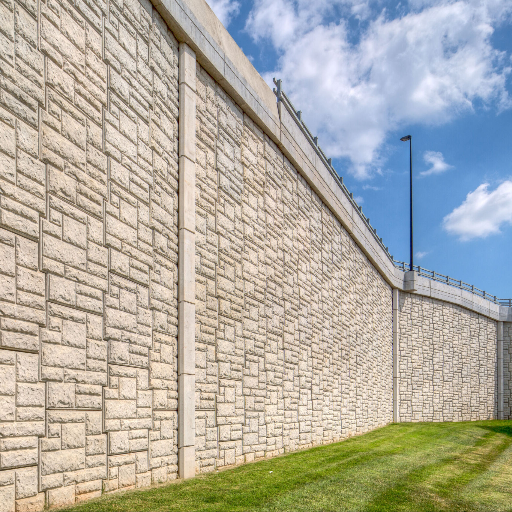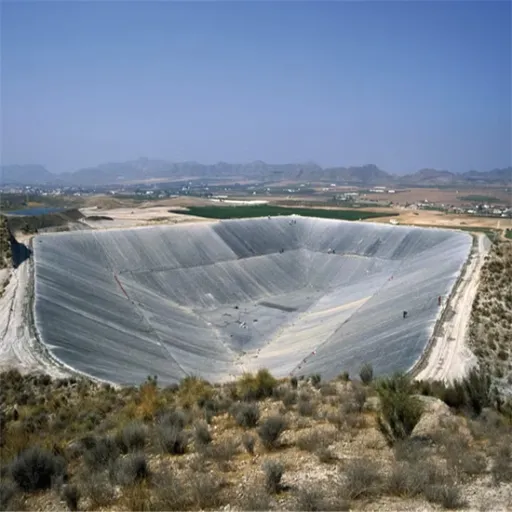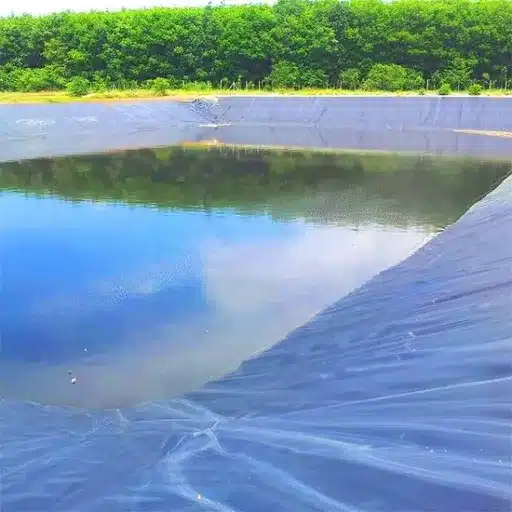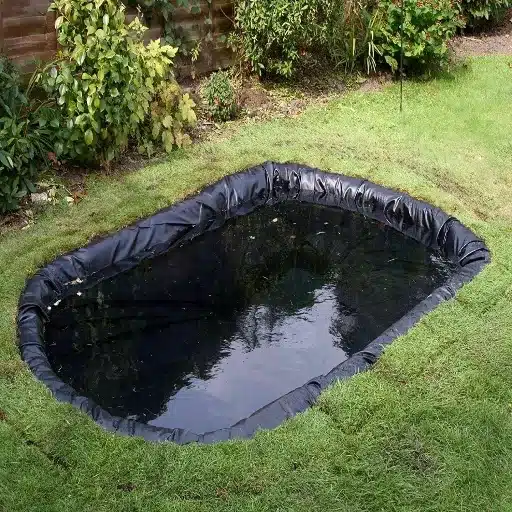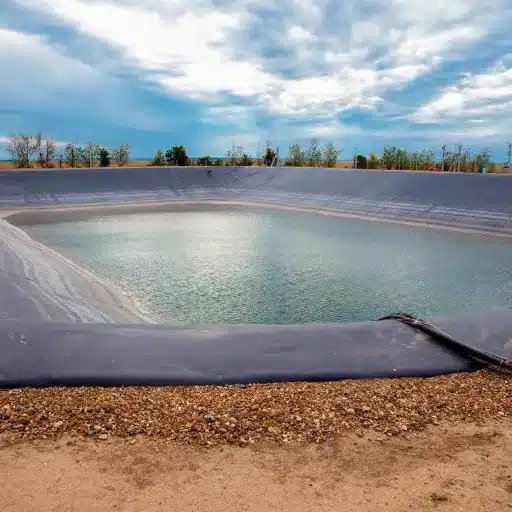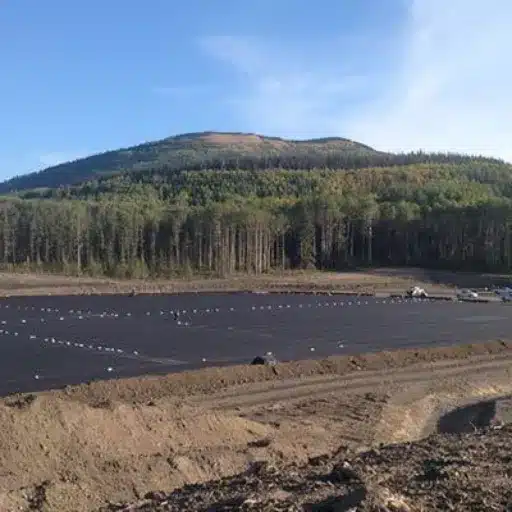Retaining walls, in today’s construction, are balancing the issues of structural integrity versus aesthetic appeal and conflicting terrains. Among the most creative and efficient solutions are the mechanically stabilized earth walls, which have changed the way we consider slope stability and erosion control. The blogenture explores the basics of reinforced retaining wall construction, discussing the philosophy behind MSE walls, their advantages, and the essential considerations in securing long-term stability. For construction professionals looking for best practices, or homeowners curious about the technology that creates strong terrains, this article offers an informative affair on traversing the world of MSE walls.
Introduction to Retaining Wall Systems
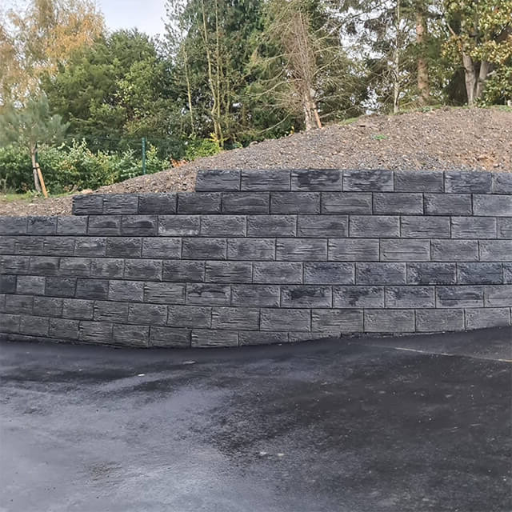
Retaining wall systems are engineered to hold the soil and prevent erosion. They are instrumentally useful for slope stabilization, terrain manipulation to create usable land, and water drainage. Gravity walls, cantilever walls, and MSE walls are the most common types that need to be applied appropriately to varying loads and site conditions.
Definition and Importance of Retaining Walls
Retaining walls find applications in present-day engineering works and landscaping, serving functional as well as aesthetic needs. The global retaining wall market is forecast to grow at a CAGR of 5.2% during the period 2023-2030 owing to increased urbanization and demand for more sustainable construction solutions. These are engineered street structures that resist lateral pressure from soil and offer stability to or support sloped areas from undergoing erosion and landslides in residential, commercial, and industrial developments.
The application of retaining walls reveals their high importance, e.g., leveling an unusable piece of land into a flat, usable area; supporting infrastructures such as roads and highways; and creating efficient drainage systems. A reinforced concrete retaining wall can take more than 20,000 lb/ft^2, which practically means that it can support high loads such as roads or large buildings. With innovations in construction materials such as geogrids and precast blocks, retaining walls have greatly improved in performance and durability and now require less maintenance, are cost-effective, and have longer life spans.
In terms of aesthetic design, retaining walls may be further enhanced with landscaping to integrate plantings into the overall design and be textured to produce architectural finishes. This versatility makes retaining walls the right choices for resolving today’s engineering problems and design considerations.
Overview of Mechanically Stabilized Earth
MSE is a very versatile and efficient technology in modern engineering projects achieving retaining walls, bridge abutments, and or slope reinforcements. This system utilizes a combination of granular backfill material with layers of reinforcements such as geogrids, geotextiles, or metallic strips to produce a stable and durable structure. This combination of elements provides a much higher capacity to bear loads, resist seismic forces, and provide flexibility to the MSE structure.
One major plus for an MSE is reduced construction time and cost. As stated in recent figures, MSE walls can be erected between 20 to 30 percent faster than their cast-in-place cousins. Also, due to the adaptable nature of MSE, engineers can design a structure that best fits challenging terrain and environmental constraints.
Further, from a sustainability viewpoint, MSE walls generally take advantage of local materials for backfill, thereby greatly reducing the carbon footprint of the bigger project. Reports from recent years have shown the usage of recycled materials such as crushed concrete that has helped reduce cost by 15% without compromising structural integrity. Their modular construction, from an engineering perspective, permits easier repairs and expansions, adding significantly to the cost-effectiveness and usability of these structures over time.
Another advantage is the aesthetic versatility of MSE walls that complement various finishes from vegetative face to textured panels, to natural stone veneer. This warrants the position of MSE for both urban infrastructural needs and environmentally sensitive zones.
With technological advancement being a constant, MSE technology continues to be subject to considerable advancements, at least to reinforcement materials and design concepts, for better performance and durability. Latest research has demonstrated that high-strength geosynthetics could enhance load resistance by 50 percent, which indicates yet more possibilities for modern construction applications using this method.
Applications in Modern Construction
The MSE walls, due to their versatility, economy, and environmental benefits, are considered an indispensable component in modern construction projects. MSE is being widely applied for the construction of retaining walls, bridge abutments, and foundation works for roadways. Recent investigations provide evidence of an increased rate of application of MSE in retaining wall projects, by capturing over 30 percent of the global market for retaining walls, mainly because of its scale-ability and cost effectiveness vis-à-vis traditional concrete walls.
Highway construction is one of the major applications, where MSE walls are favored because of quick installation and minimum excavation required. ARTBA reported that in high traffic zones, the use of MSE technology to construct walls may reduce wall construction time by up to 35 percent. As a result, the use of polymer-reinforced geosynthetics in conjunction with MSE walls has enhanced service lifespan, where some ones can be technically designed to provide over 100 years of service under optimal conditions.
Besides, construction is green with another support of MSE by reducing raw material consumption and thus cutting the carbon footprint on projects. Another recent improvement supports the application of recycled materials in backfilling, which further promotes environmental friendliness of MSE structures. This conception of sustainability ties well with worldwide construction trends aimed at lowering environmental impact while preserving structural integrity.
Types of Retaining Walls
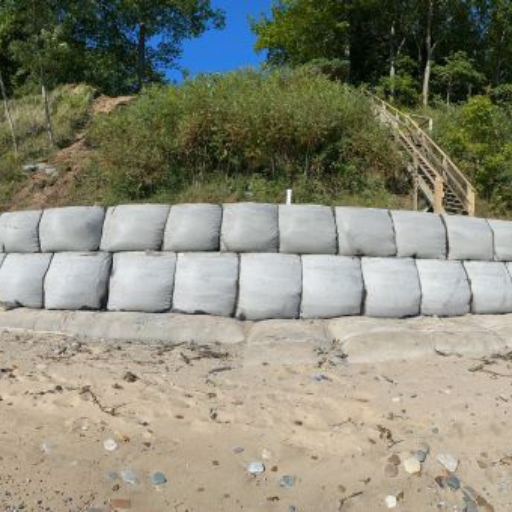
There are thus types of retaining walls: gravity walls, cantilever walls, anchored walls, and MSE walls. Each type of wall is designed based on different project requirements, soil conditions, and load assumptions.
Gravity Walls
Gravity walls rely on their mass to resist lateral pressures exerted on them by the soil. They are usually constructed with heavy materials, such as concrete, stones, or masonry, to provide stabilization without any additional structural reinforcement. Their size and weight are proportional to the height and pressure of the soil retained.
Design and Specifications
A general design recommends maintaining a wall width of at least 50-60% of the wall height for the gravity wall. This design should therefore counteract sliding and overturning effects resulting from external pressure and earth pressure. Furthermore, modern engineering has sought to optimize gravity wall design by employing precast concrete blocks or incorporating geogrid-reinforced backfill to improve longevity.
Applications and Case Studies
Gravity walls shall remain best for low retention purposes, that is, less than 10 feet (3 meters) in height. Industry information states that gravity walls are largely used for landscaping, highway construction, and retaining in slope residential areas. For example, a study in 2020 showed that modular precast concrete gravity walls improved construction efficiency by more than 30% due to easier installation and less manpower for installation. Reinforcing this idea, sustainable materials, such as recycled concrete aggregates, could reduce carbon emissions arising from the construction of such walls by approximately 20%.
Economic Impact
Construction for gravity wall may cost anywhere between $15 and $30 per square foot base on material chosen and site conditions. Recently, the cost has significantly dropped due to advances in material technology and modular system designs, making solutions feasible for a larger array of projects.
Cantilever Wall
Because of their good leverage of stability and materials, cantilever walls are among the most popular types of retaining walls. Usually composed of reinforced concrete, it is characterized by a thin vertical stem and a broad base slab tapering into a “heel” and a “toe.” The heel extends under the retained soil while the toe lies on the opposite side to counteract the structure.
Modern developments have concentrated on optimization in cantilever wall designs, focusing on reducing material use while safeguarding structural integrity. In contemporary studies, a normal cantilever retaining wall is stated to cost somewhere between $25-$50 per square foot, depending mainly on height, site conditions, and labor rates in the area. Statistics show walls less than 12 ft in height are more economically viable since with greater heights, increased materials and labor for better reinforcement are needed disproportionately.
New concrete admixtures and reinforcements, like fiber-reinforced polymers (FRPs), have contributed to increasing durability and minimizing cracking, thereby attaining a life span of 50 to 75 years with minimal maintenance. For greener projects, use of recycled or green concrete may reduce the carbon footprint of cantilever walls by about 30%, hence advancing both environmental and economic gains; these paint a fascinating picture of the evolution and diversity cantilever walls enjoy as an ever-reliable solution for retaining structural requirements.
Mechanically Stabilized Earth Walls
Originally popularized because of their cost-effectiveness, strength, and adaptability, the MSE walls have been regarded as the most ideal choice for retaining wall systems. The walls build their strength by laying down alternate strata of compacted backfill and reinforcement elements, frequently steel or geosynthetic strips, to form a highly durable and stable structure. According to the latest information, the MSE walls have in great capacity to withstand loads and have been designed to support heights of more than 100 feet, depending on soil states and reinforcement design.
They also perform splendidly in seismic zones as, being flexible, MSE walls accommodate ground movements thereby lessening chances of structural failure. Studies reveal that these walls could cut construction costs by 50 percent when compared with the conventional concrete retaining walls, mainly due to the decrease in materials and labor. Also, the geosynthetics used in MSE walls facilitate drainage and reduce water buildup, thereby contributing to their long-term durability.
Environmentally, it takes lesser concrete for MSE walls as against conventional systems, and the ability to use locally sourced backfill materials will greatly cut down the environmental footprint of the project. With these modern advancements, including synthetic reinforcement materials, the lifespan of MSE walls has been extended to around 75 to 100 years, thereby making them a sustainable and reliable solution for infrastructure and landscaping projects.
The Considerations in the Design of Retaining Walls
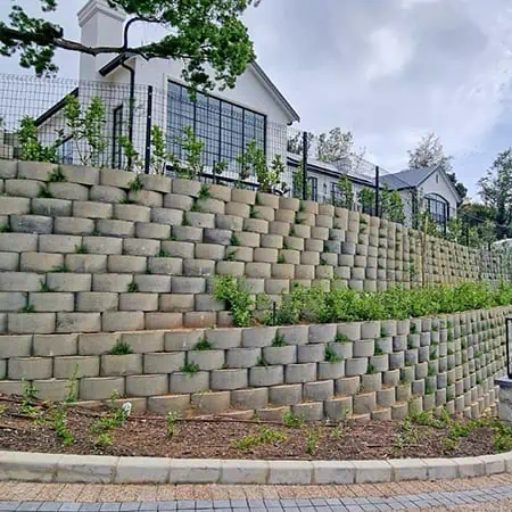
Factors influencing the design of retaining walls are soil type, load considerations, drainage solutions, and materials to be used in construction. A proper analysis of these factors guarantees the stability, durability, and usefulness of the wall in the environment for which it was intended.
Factors Influencing Design
Soil Type and Condition
The consideration of the soil types and their various conditions is important for the design of retaining walls. Cohesive soils like clays provide greater lateral stability; however, they expand and contract with moisture variations, requiring cautious treatment. Granular soils, on the other side, drain better but sometimes have to be reinforced against instability. Recent studies point out that an adequate knowledge of the bearing capacity of the soil and the active and passive soil pressures will safeguard the wall from being unstable by sliding or overturning due to these forces.
Load Requirements
A retaining wall is also subjected to different loadings other than dead loads or self-weight loads, such as those produced by traffic, pedestrians, or machinery. The walls expected to be subjected to traffic from vehicles are thus expected to carry very heavy loads. It is now recommended that engineering design use a minimum factor of safety of 1.5 for sliding and overturning resistance of retaining walls to ensure structural safety.
Drainage Solutions
Failures of retaining walls are largely caused by the presence of poor drainage. Such solutions equipped with weep holes, perforated pipes, and geotextiles reduce hydrostatic pressure by allowing the water to escape. New advanced backfill techniques and drainage membranes rather improved water management and increased retention wall life.
Material Selection
Are materials selected out of race of durability, aesthetics, and cost-efficiency? For example, among others, modular concrete blocks seem to be the cheapest, while materials like natural stone win the prize for beauty. Based on statistics, reinforced concrete is mostly used because it is very strong and versatile.
Environmental and Seismic Concerns
What is the level of frost penetration and what temperature fluctuations are expected there? Some consideration of environmental matters will have to be made-if the place is subject to a seismic occurrence, then the seismic considerations will also need to be taken into account. Therefore, new retaining-wall construction, in most cases, will be made using flexible materials or reinforced with geosynthetics to withstand ground movements and seismic forces and, hence, remain intact and serviceable under dynamic conditions.
By giving priority to such considerations and employing advanced tools such as finite element analysis (FEA), engineers will be able to design safe, durable, and sustainable retaining walls tailored to specific needs.
Soil Properties and Stability of Slopes
Slope stability and the performance of retaining walls strongly depend on the inherent properties of the soil. Key factors influencing slope stability include soil type, cohesion, internal friction angle, unit weight, and moisture content. The engineer knows these parameters, whereas he can evaluate the possibilities of soil movement and thus design mitigating strategies.
Cohesion and Internal Friction
Cohesion refers to the capability of soil particles to stick together typical in clayey soils; conversely, internal friction angle quantifies in resistance of soil particles sliding against one another, particularly in sandy or granular type soils. We may state, for example, that compacted dry sandy soils could have an internal friction value of 30-35 degrees, whilst saturated clayey soils may have considerably lower values.
Moisture Content and Saturation
The water content affects the steady state of a slope by reducing the effective stress and increasing the hydrostatic pressure. Various studies have suggested that slopes in high rainfall regions are 10 times more likely to fail than those in dry areas. Employing drainage systems, such as weep holes or geotextiles, can significantly reduce the accumulation of water and the probability of slope instability.
Shear Strength and Safety Factor
Shear strength consists of some cohesive forces and frictional resistances. An engineer usually determines a factor of safety (>1.3 is recommended) to guarantee soil slope stability for several load conditions. Nowadays, these parameters are analyzed in a real-life situation by using advanced modeling tools, such as finite element.
Data Regarding Slope Failure
According to a recent study in 2023, approximately 50% of slope failures around the world take places due to improper assessment of soil properties and ill-equipped drainage design. As simple as rains or seismic activities triggered by landslides bring in billions of dollars every year as property damages, Southeast Asia, and South America being top among the affected regions.
With the help of triaxial compression tests and modern modeling methods combined, engineers can now envisage behaviors much ahead. Monitoring technologies like inclinometers or ground-penetrating radar can go further to apply preventive measures for slope stabilization, thereby reducing risks and set-back infrastructures.
Backfill Material and Drainage Solutions
Drainage is important for slope stability and long-term performance of infrastructure. For backfilling materials, their purpose is determined by the nature of the soil, the type of load, and specific conditions of the project. Granular materials such as gravel and crushed stone are generally used because they drain freely but also provide sufficient bearing. For instance, some studies revealed that coarse-grained soils with satisfying permeability can reduce pore water pressure, and hence, mitigate the risk of failure of slopes.
The drainage is designed to complement the backfill performance and promote the management of water flow; it prevents water build-up. It has been shown that solutions such as perforated drainage pipes, geotextiles, and drainage blankets successfully channel water away from critical areas. According to a 2022 report by the American Society of Civil Engineers, robust drainage systems in infrastructure projects can decrease instances of slope failures by up to 40%. This proves highly beneficial during periods of heavy rainfall or water insurgence as includes the likes of Southeast Asia or Central America.
When employed with high-quality backfilling materials, these well-engineered drainage solutions provide a complete defense from erosion and soil instability. This in turn prolongs the life of the infrastructure while minimizing repair costs.
Materials Used in Retaining Wall Construction
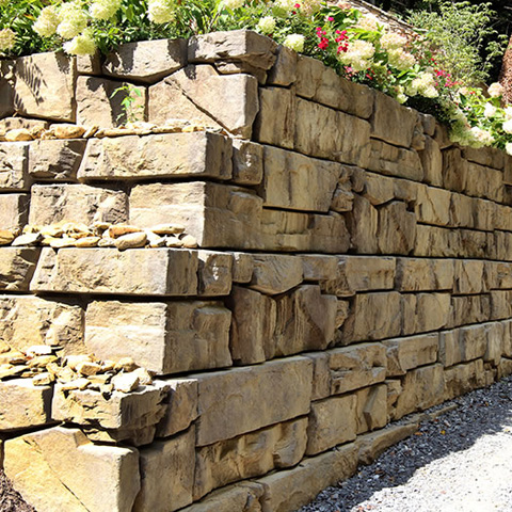
Depending on several factors such as strength, availability, and requirements of the project, retaining walls are mainly made out of blocks of concrete, poured concrete, stone masonry, brick masonry, and treated wood for lasting stability.
Reinforced Soil Techniques
Reinforced soil techniques are engineering approaches intended to increase the load-bearing capacity and stability of retaining walls by introducing reinforcements into the soil such as geogrids, geotextiles, or metallic strips. This reinforcement allows the soil to bear greater loads, transferring reduced stresses to the retaining structure. More recently, scientists have experimented with geogrid reinforced retaining walls under very high seismic loading and have proven that such walls with geogrid reinforcements can reduce wall displacement by up to 40%, making them a trusted solution in seismic-prone areas.
Also, geotextiles are synthetic fabrics used to enhance certain soil characteristics and are expected to increase the tensile strength of the soil by quite some amount. An industry report has forecasted that the geotextile market will grow to $11.3 billion by 2027, showing increased usage of these materials in infrastructure and retaining wall-building projects worldwide.
Statistical data show an improvement in retaining walls of up to 30% in durability when employing metal strip reinforcements compared to conventional methods. Metal strip reinforcement is used in large-scale civil engineering projects, such as construction of highways and slope stabilization. These novel techniques will strengthen retaining walls, and maintenance costs shall be reduced with time, making it a cost-effective solution.
Modular Wall Products
Celebrated for their adaptability and rapid construction, modular walls have gained popularity in recent times. Offered for commercial and residential applications, these walls come pre-engineered for easy installation, thereby cutting down on construction time by about 50% compared to the traditional way. Recent studies estimate that the demand for modular wall systems will continue to evolve at a CAGR of 6.8% from 2023 to 2030, predominantly due to their sustainable and customizable nature.
The best option modular walls offer is great soundproofing capabilities; such walls cut noise transmission by nearly 70%, providing a much-needed relief for urban areas and office spaces where noise is a disruption. In line with rising environmental standards and certifications such as LEED, these modular walls also often opt for eco-friendly materials. Again, recycled panels and lightweight concrete are examples of such materials that reduce environmental impact while retaining strength and durability.
Moreover, modular walls have the advantage of offering huge cost savings, not just on labor but also by decreasing the waste produced on-site during construction by about 25%, which is an important factor when work occurs on large sites where encompassing efficiency is a priority. With technological progress, certain modular wall systems have further incorporated smart features, including built-in structural monitoring sensors that provide real-time data on wall integrity and maintenance requirements.
In summary, modular wall products represent a novel approach in the construction market, accordingly responding to the current demand for efficiency, sustainability, and affordability.
Innovative Materials in MSE Walls
Modern MSE walls take advantage of innovative materials that promise better performance and sustainability. For example, geosynthetics such as geogrids and geotextiles increase MSE wall stability by reinforcing the soil and providing a more even distribution of load. Reports also show that geosynthetics are cost-effective and highly durable, with an expected lifespan of 75-100 years under appropriate conditions.
Recycled materials such as crumb rubber and fly ash are also favored in the backfill for their additional environmental benefits and cost savings. Fly ash, a secondary product of coal combustion, improves soil properties and offers an environmentally friendly substitute for traditional construction materials. Contemporary research proves that the use of fly ash can lower greenhouse gas emissions by approximately 40% compared with conventional cement-based materials.
Another advancement has come with the introduction of modern polymer coatings for steel reinforcements, offering improved corrosion resistance to MSE walls’ life further in adverse conditions, such as coastal or high-humidity environments. According to recent studies, polymer-treated reinforcements can remain effective for up to 50% longer than their untreated counterparts.
The integration of smart technology within the materials used in MSE walls also holds much promise. By embedding sensors within the reinforcement layers, temperature, moisture, and stress can be monitored in real-time. This capability allows for timely maintenance, cutting down the risks of failure and reducing costs down the line. In some reported cases, this has led to almost 25% cost reduction in maintenance for the large infrastructure projects.
By combining traditional engineering principles with innovative materials and technologies, MSE walls are setting new standards in the industry for durability, sustainability, as well as efficiency. These innovations do not only relate to the raging demands of today’s infrastructure projects but also closely correspond with the world’s agenda for environmental preservation.
Common Applications of Retaining Walls
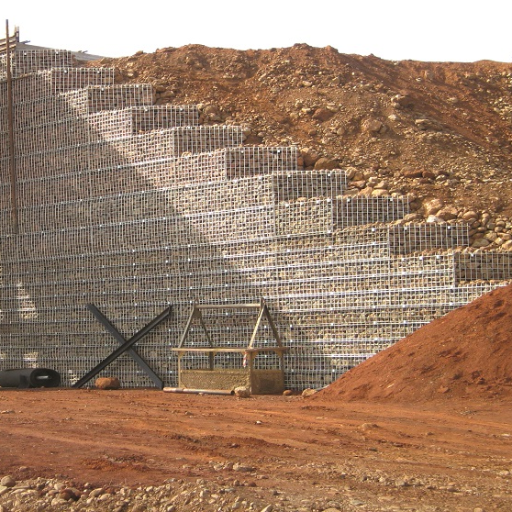
Retaining walls are generally employed for applications such as stabilizing slopes, cutting or filling for roadways or building foundations, and controlling soil erosion. They are also important in landscaping to demarcate spaces and provide some structural support.
Bridge Abutments and Roads
Retaining walls attain a degree of primary importance in maintaining structural stability through the support of soil beneath bridge abutments and roadways, thus preventing soil displacement. In the modern area, heavily reinforced retaining walls appear to have found much more application, especially in urban centers where the scarcity of land demands vertical construction solutions. That is why MSE walls are a preferred commercial solution-they are cost-effective and can withstand significant loads.
In statistical terms, MSE walls reduce construction costs by almost 20–40% compared to traditional concrete retaining walls, making them the most effective option for very large projects. The application of geotextiles also supports the increased durability and longevity of these retaining walls. In the case of roadways, retaining walls are used to create a stable path, reduce the risk of landslides over uneven or hilly terrain, and ensure safe travel.
Landscaping and Garden Retaining Walls
Landscaping and garden retaining walls have functional and attractive purposes. They help discourage soil erosion, control the water runoff, and provide a level base for recreation or planting. According to a recent industry report, market demand for retaining walls for landscaping purposes has witnessed an enormous increase in the past few years, with the global retaining wall market forecasted to reach $9.1 billion by 2031, growing at a CAGR of nearly 5% from 2021 to 2031. The driving factors for this growth are urbanization, rising interest in home-based gardening, and the adoption of sustainable landscaping practices.
Retaining walls in gardens are made from a wide range of materials, including concrete blocks, natural stone, and wood. Concrete block walls continue to be the most popular because of their durability and cost-effectiveness, whereas natural stone walls are favored because of their aesthetic qualities, even if they are more costly. New technologies, including reinforced soil and environmentally friendly materials, have also enhanced the effectiveness and sustainability of retaining walls in landscapes for both residential and commercial applications. These long-lasting and highly versatile structures contribute significantly to the beautification of outdoor spaces, all while solving numerous technical problems.
Urban Development and Slope Systems
With urban planning and slope management, various issues can arise. Increased need for infrastructure expansion in cities has thus led to a proportionate increase in constructions over uneven terrains and sloped lands. Almost 40% of urban areas worldwide are stated to be constructed on or adjacent to sloped landscapes-further underpinning the need for systems to stabilize such areas.
Retaining walls play a significant role in these situations, mostly implemented in densely populated urban zones where land is expensive and ought to be put to good use. The advent of geogrid and reinforced soil systems has improved slope stability with enhancements to durability and reduced environmental impact. The use of such green materials as recycled aggregates and permeable concrete encompasses improved sustainability. These modern techniques are reported to reduce erosion by about 70% and improve slope systems’ load-bearing capacity by roughly 45% over traditional means.
In conjunction with green infrastructure solutions such as terraced vegetation or bioengineered layouts, slope systems presently function as multipurpose aids for stormwater management and biodiversity enhancement. Urban planners and engineers utilize these advanced systems more and more to assure the safety, functionality, and aesthetic appeal of urban developments, with slope stabilization becoming one of the major concerns in contemporary city planning.
Reference sources
1. Performance Evaluation of Prefabricated Retaining Wall Systems Based on Centrifuge Tests
- Authors: Honglue Qu et al.
- Published In: Proceedings of the Institution of Civil Engineers: Engineering Sustainability
- Publication Date: January 24, 2024
- Citation: (Qu et al., 2024)
- Summary:
- This study presents a novel prefabricated retaining wall system and evaluates its performance through centrifuge model tests. The research investigates the influence of different infill materials on the wall’s performance.
- Key Findings:
- The prefabricated retaining wall system significantly stabilizes slopes and can withstand stress levels up to four times that of natural slopes.
- The stability of the wall is notably improved when infilled with frictional soil compared to clay infill.
- The unique structure of the wall reduces material consumption and carbon dioxide emissions by approximately 63.94%, while also allowing for the planting of vegetation in the gaps of its components, promoting sustainability.
2. Risk-Based Asset Management Framework for Highway Retaining Wall Systems Using Wireless Structural Health Monitoring Data
- Authors: K. Admassu et al.
- Published In: Advances in Structural Engineering
- Publication Date: August 2, 2024
- Citation: (Admassu et al., 2024, pp. 2929–2949)
- Summary:
- This paper proposes a risk management framework for highway retaining walls, addressing the challenges of managing vast inventories and the limitations of visual inspections.
- Methodology:
- A long-term wireless monitoring solution is introduced to measure wall tilt and strain over extended periods.
- An analytical framework separates thermal responses from lateral earth pressure responses, which are used to assess wall reliability and failure probability.
- Key Findings:
- The monitored wall exhibited significant diurnal and seasonal variations, providing insights into its behavior under operational conditions.
- Even with a hypothetical 20% loss of reinforcement section, the wall maintained a reliability index above 3.0, indicating robust performance.
3. Numerical Analysis of Mechanically Stabilized Earth Walls in Hybrid Retaining Wall Systems
- Authors: H. Abbas et al.
- Published In: Advanced Research on Shallow Foundations
- Publication Date: October 28, 2018
- Citation: (Abbas et al., 2018)
- Summary:
- This study focuses on the numerical analysis of mechanically stabilized earth walls within hybrid retaining wall systems.
- Methodology:
- Numerical simulations were conducted to evaluate the performance of these walls under various loading conditions.
- Key Findings:
- The analysis provided insights into the stability and performance characteristics of mechanically stabilized earth walls, contributing to the understanding of their application in retaining wall systems.
Frequently Asked Questions (FAQs)
What are earth retaining wall systems?
Generally, earth retaining wall systems are structures designed to hold back the soil and to resist lateral earth pressure. At times, they become necessary to maintain slope stability, whether on sites with natural gradients or during construction. In many cases, these retaining systems vary in their nature by composition, which may range anywhere from concrete walls to modular-block retaining systems and geosynthetic retaining walls.
Which types of retaining walls mostly find their use in construction?
Common types of retaining walls include gravity retaining walls, reinforced soil retaining walls, and mechanically stabilized earth (MSE) walls. Each compounded version aims at a specific condition, whereby gravity walls depend on their weight, reinforced soil walls use geogrids for stability, and MSE walls strengthen soil with some form of reinforcement.
How will a reinforced soil retaining wall work?
Reinforced soil retaining walls reinforce soils by use of geogrids or other reinforcements acting on or within the soil mass. The overall thickness of the wall may be reduced and yet it does not have overriding problems managing lateral earth pressure. For that matter, it can be used economically for a variety of earth retention requirements.
What are some advantages of a mechanically stabilized earth wall?
The advantages of mechanically stabilized earth walls include faster construction time, lower material costs, and greater design flexibility. They can accept almost all types of backfill, applicable in almost every condition for geotechnical infrastructure solutions.
How are modular block systems used in the construction of retaining walls?
These systems are widely used in retaining walls, are easy to install, and are above all very adaptable. The interlocking blocks allow an excellent structural performance while leaving great freedom for design possibilities. They can be easily adapted depending on the requirements of the project and different landscape aesthetics.
What is the role of geogrid in retaining wall systems?
Geogrid plays an important role in retaining wall systems to reinforcements of the soil mass. It helps by improving load distribution received by the walls, ultimately improving wall stability and performance. In most cases, geogrid is used in MSE walls and reinforced soil retaining walls to further enhance their structural capabilities.
How to get Tensar products for my retaining wall project?
To get Tensar products for your retaining wall project, you can visit their official website or contact local distributors. Tensar offers numerous geosynthetic materials and design software options, such as Tensarsoil design, to help design optimized reinforced soil walls and other retaining structures.
For what commercial uses are earth retaining walls generally being put?
Earth retaining walls are employed in commercial projects for many uses such as supporting bridge abutments, setting up level surfaces for buildings, and controlling slopes for parking plus safety. Their ability to stand girls makes them favorite amongst construction sites to keep safety and functionality.

